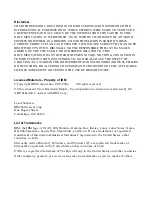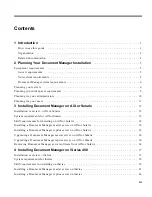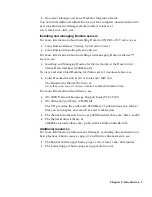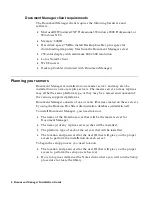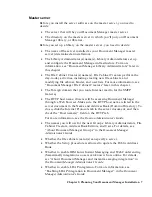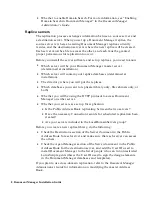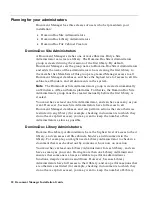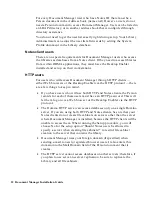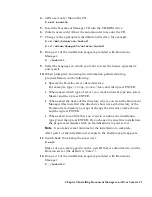
If you intend to use any replication features, it is suggested that you also
read the Document Manager Administrator’s Guide topics on replication.
Domino HTTP server
Document Manager can be accessed from either a Notes client or a Web
browser.
For the setup process, you need to know:
•
The host name for your Domino HTTP server.
•
The IP address for your Domino HTTP server.
If some users will be accessing Document Manager via Web browsers (or the
Desktop Enabler via the HTTP protocol), you need the host name for your
Domino HTTP server. This is the string that follows the “http://” portion of
the address of your server; for example, “www.lotus.com” or
“domino.lotus.com.”
Note
If your Domino Web server uses a port other than 80 for HTTP, you
use the following address syntax:
http://myHTTPServer:port/librarynameLIB.nsf
The host name is used to construct URLs for access to file cabinets. These
URLs are included in the e-mail messages sent to users who are invited into
file cabinets. You should keep this in mind when you choose between using
your server’s host name or an IP address. People outside your corporate
network may not be able to resolve your host names. If you collaborate with
such people, you might prefer to use an IP address rather than a host name.
Planning your disk space requirements
Disk space requirements vary with the number of users, and the number and
size of documents.
The amount of disk space required by an active document management
system can be large. Be sure that there is enough free disk space to handle
the expected volume of documents, given the average expected size of a
document, number of users, and rate of document generation.
Document Manager lets you spread a file cabinet across several Notes
databases, and also supports Notes directory links.
Chapter 2: Planning Your Document Manager Installation 9


